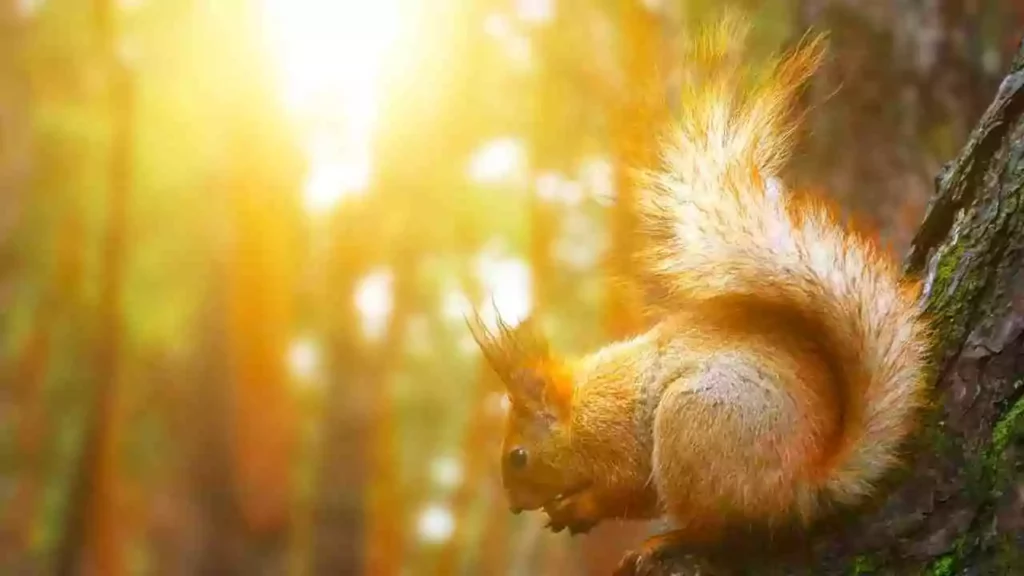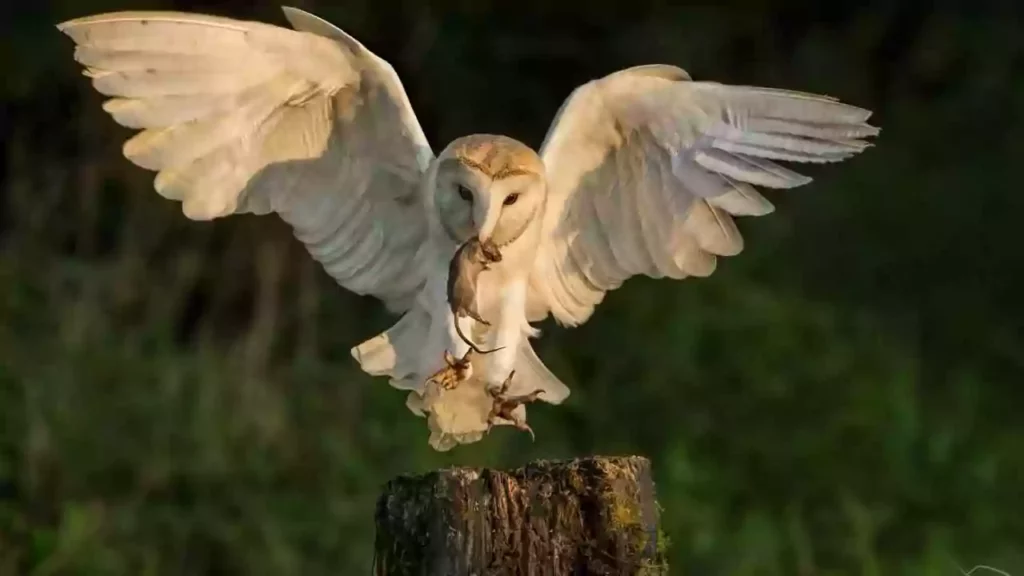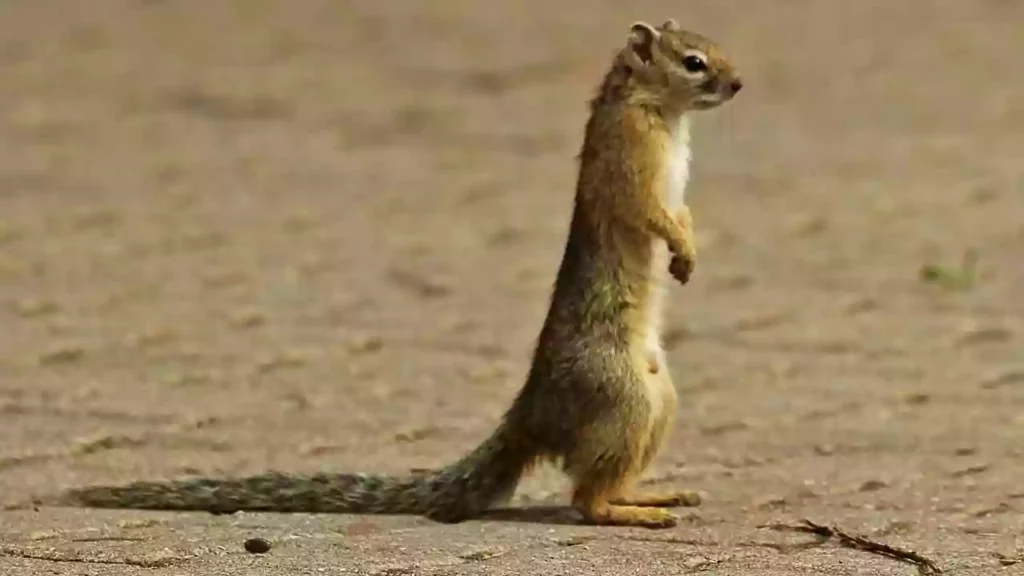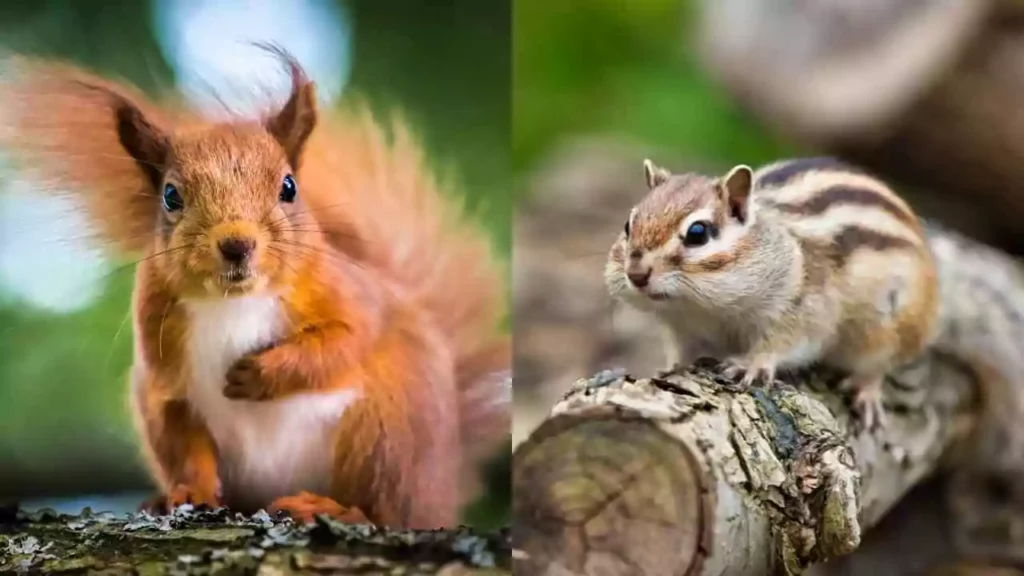Squirrels are entertaining animals as they are playful and active. And if we talk about baby squirrels they are just adorable.
If you hear some high-pitched squeaking sound from your backyard, it might be possible that you have found a baby squirrel.
Baby squirrels are one of the cutest babies among all the animal kingdoms as they are tiny, fragile, and cuddly. So, if you find a baby squirrel around you and don’t see its mother then it is upon you to take care of baby squirrel.
This article will help you in doing so that if you find a baby squirrel around you and have no idea what to do then continue reading.
Baby Squirrel’s Age
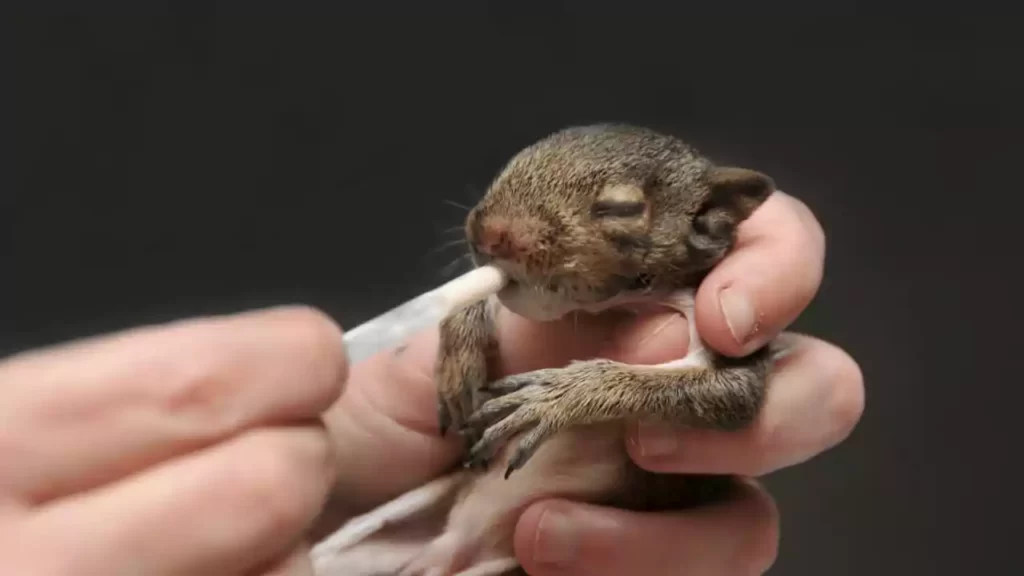
Unlike other animals, baby squirrels can’t do anything on their own when they are born. Although, they require intensive care.
But how to identify the age of a baby squirrel? How you will get to know that how old is it?
Well, you can judge this by matching its appearance and behavior to this description.
| Age | Description |
|---|---|
| Newborn to 1 week | Pink body with no fur, body measures about three inches |
| 2 weeks | Fur starts to develop on the back, eyes still closed |
| 3 weeks | The body grows about 4 inches, eyes still closed |
| 4 weeks | The body grows about 5 inches, eyes open |
| 5 weeks | 6 inches long, top front teeth coming in |
| 6 weeks | develops back (cheek) teeth, can sit up on its own and hold food in its front paws |
| 7 to 8 weeks | 7-8 inches long, fur has fully grown in, becoming more active |
| 8 to 9 weeks | learning to climb, still smaller than adult squirrels, can be released outdoors if healthy |
Is Your Baby Squirrel Healthy?
When you find a baby squirrel it is important to figure out that is the baby squirrel is healthy or not?
There are several illnesses that a squirrel can contract. Even domestic squirrels can also carry diseases.
Common squirrel diseases include:
- Leptospirosis
- Salmonellosis
- Parasites
- Lyme Disease
- Tularemia
Signs of Sickness
Squirrels are bright eyes and bushy-tailed animals. They are zippy, alert, and quick on their feet. A healthy squirrel carries all these characteristics, so if don’t notice these signs it means your pet squirrel is sick.
Here are some signs of sickness among baby squirrels:
- Sneezing
- Runny nose or eyes
- Lethargy
- Abnormal behavior
- Rapid breathing
- Lackluster coat
- Dim eyes
Health Checks To Do
Look for visible signs of problems in squirrels like scratches, wounds, or trauma. If there is any visible unusual then pay attention to breathing and respond accordingly.
Squirrels are exotic pets and they need to get to wildlife professionals who are experienced.
Moreover, squirrels can face certain illnesses. Even domestically bred squirrels can also carry diseases. Any veterinary testing can determine the health of the baby squirrel.
Baby Squirrel Poop
A squirrel’s poop is dark brown, smooth, and looks similar to a rat’s poop. The only difference is in the size and shape.
Squirrels are found to leave behind droppings that look like large barrel-shaped pellets.
Moreover, baby squirrel’s poop is paler than that of a rat’s because of their diet.
Suspect baby squirrel’s poop closely and if you feel any difference rather than described above then visit a nearby vet.
If the squirrel’s poop is a mix of soft and hard poop it might be possible that the baby squirrel is dealing with a severe infestation.
Adopting a Baby Squirrel for Care
Can someone adopt a baby squirrel for care? Yes, but there are some legal issues associated while adopting one because they are considered a wild animal. Some states allow adopting squirrels if a person has a rehabilitation license.
If you find an orphan squirrel, call your state’s wildlife agency and get a piece of advice from them that what to do next.
The Following States Have Few or No Restrictions for Adopting a Squirrel:
- Arkansas
- Florida
- Iowa
- Minnesota
- Nevada
- South Carolina
- South Dakota
- West Virginia
How Do You Know If A Baby Squirrel Is An Orphan?
If you find a baby squirrel alone and feel the need to care for it so just be sure that the mother is no longer able to care for it.
You can know that a baby squirrel is an orphan if you find it alone and it is dehydrated or malnourished.
Depending upon the severity of the injury, you can diagnose the illness of the baby squirrel and take it to any nearby vet.
If it is dehydrated or starving, you can tell that the mother has not been able to care for it. She might have been trapped and removed in another yard, killed by a predator, or died from falling or natural causes.
Initial Care Of A Baby Squirrel: 4 Steps
The first step is to check the baby squirrel for injuries.
- By using a cloth, gently pick up the baby and carry it indoors to a well-lit room with a sink. However, you can also fill a bucket with warm water.
- Check the baby’s face. It should move its head from side to side. If it does not that means the baby has a broken neck or has a spinal injury.
- Gently squeeze each paw and the tail. And see how the baby squirrel reacts. It should pull away from the pressure. If it does not then it might have a broken leg or a tail.
- Do not mix any soap in warm water to bathe the baby squirrel. Just use a soft washcloth to clean any cuts and rush away any debris or parasites over the baby.
Secondary Care Of A Baby Squirrel
Here are some secondary care steps.
Rehydrating
Rehydrating is one of the essential secondary care if you find a baby squirrel. It is more important than the food itself. You can use Pedialyte or mix half a teaspoon of salt and half of sugar in two cups of water and feed it to the baby squirrel with the help of a syringe.
Bedding and Habitat of a Baby Squirrel
If you have made your mind to petting a baby squirrel then raising a baby squirrel to release or keep requires a series of habitats that progressively get larger as the squirrel grows with time. So, it is quite expensive to raise a squirrel.
However, a baby squirrel can be kept in a pet carrier or something else small that is enclosed and enables air to flow through a couple of weeks.
What Do Baby Squirrels Drink?
If you find an abandoned baby squirrel, it should be rehydrated at first. To do so, feed Pedialyte or make a mixture in the direction of your veterinarian.
Never feed cow milk, almond milk, soymilk, breast milk or any available premixes to a baby squirrel. A baby squirrel has unique nutritional requirements. Their milk should be high in fat and Lactose-free.
Baby squirrels are small enough to have a large amount of any fluid. Feed them a small quantity of fluids after every four hours. Also, keep them warm while feeding, it helps them in optimal digestion.
Baby Squirrel Food
Once the baby squirrel is warm and hydrated, she is ready to have some solid meal.
Here is a recommendation to feed a baby squirrel according to their age:
Squirrels from 10 days to 2 weeks old: corn and sweet potato are better for baby squirrels at this age.
When the baby squirrel is 6 weeks old then it will be ready to start nibbling on solid food. This food can include kale, broccoli, apples, grapes, sweet potato, and nuts.
How To Make A Baby Squirrel Pee?
Take a soft cotton ball or a tissue then gently stroke the genital area in a circular motion (the way you expect a mother squirrel would do). In this way, a baby squirrel will pee within a few seconds, or sometimes it takes a bit longer, so be persistent.
Baby Squirrels Sounds
When baby squirrels are hungry, stressed, or in a miserable condition, they sound like birds due to their soft and high-pitched chirping.
Are Squirrels Good Pets?
Squirrels are fun to watch but if we talk about squirrels as pets then it might not be a good idea. They are fragile and sensitive and need a lot of care especially during their initial days of birth.
Here are some of the reasons that why squirrels are not good pets:
- They have sharp teeth
- They have sharp nails
- They are addicted to junk food
When Should I Release My Baby Squirrel?
Don’t release your baby squirrel until it is 4 to 6 months old. However, after this period, they are ready to be released and live on their own.
Or if you find that baby squirrel is not in the condition to be released then contact any local wildlife and hand over it to them.
Baby Squirrel Facts
Here are some of the amazing facts about the baby squirrel:
- Baby squirrels are the cutest creatures that you’ll ever see.
- Baby squirrels mature much, faster than the human beings
- Squirrels have two baby seasons a year.
Frequently Asked Question
Here are some frequently asked questions about baby squirrels care.
How to nurse a baby squirrel?
Baby squirrels need extra care as they are fragile. To nurse a baby squirrel, you need to feed Pedialyte and puppy milk to grow. You can nurse a baby squirrel with a lot of care and feed it with a bottle and then it will bond to you as its ‘mother’.
How to save a baby squirrel?
If you find a baby squirrel in a miserable condition, call the nearest animal welfare or rehabilitation center and take it to the nearest vet.
What is a baby squirrel called?
Baby squirrels are also called ‘kits’ or the kittens when they are born.
When do squirrels have babies?
Squirrels have two breeding seasons; the first litters are normally born in late February and March. Squirrels have a second litter between June and July.
Final Words
Baby squirrels are the cutest creatures which are fun to watch. They are playful and active, however, if you find a baby squirrel in a miserable condition you need to visit it to the nearest vet or rehab center.
Due to their fragile nature, it can be sometimes difficult to take care of a baby squirrel. But with proper care and nursing, you can feel a miserable squirrel all okay.
SmallPetsX.Com does not provide veterinary advice. Our aim to help small pet owners understand their pets a little better so that they can provide their pets with the life they deserve. All content is therefore for informational purposes only. If you're concerned about the health of your pet you should seek medical advice from a vet.

